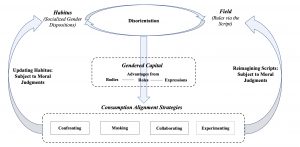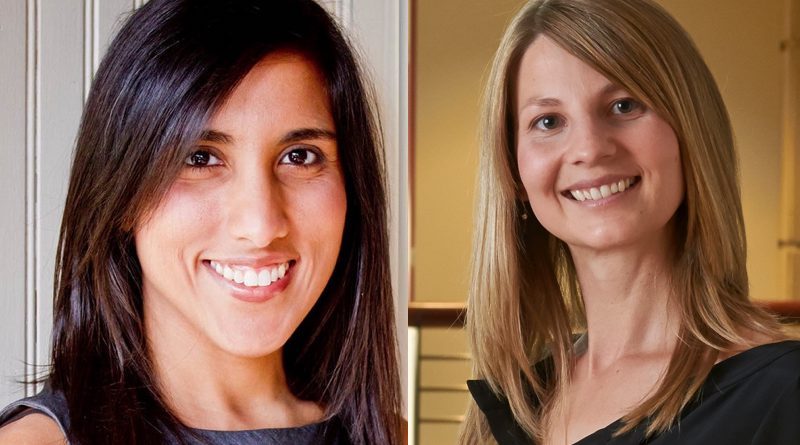How Do Same-Sex Couples Navigate Hysterisis?
A timely and relevant new JCR paper by Sunaina Velagaleti and Amber Epp investigates same-sex couples’ attempts to address hysteresis – when their gendered bodies, roles, and expressions are out of sync with the evolving script of a destabilized wedding field. We asked the authors to summarize their findings for you:
Tradition is at the heart of America’s wedding industry, a multi-billion-dollar marketplace that dictates legitimacy—who and what will be valued and accepted—as well as the latest styles and trends. Each year, millions of couples embark on the extensive and pricey wedding planning process, contracting with planners, service providers, and retailers to make their special day unforgettable. But with the legalization of same-sex marriage, the norms and guidelines of the cultural wedding “script” changed—literally overnight in some states. Same-sex couples found themselves navigating the evolving rules of a strictly binary (bride, groom) wedding marketplace that never had them in mind to begin with.
Our study looks at what happens when a field becomes destabilized and the resulting disorientation consumers feel when they move through that disrupted space. Grounded in its history, the wedding market reflects binary gender ideals ingrained into its products, services, imagery, and infrastructure. When that binary is challenged, there’s a sense of disorientation about what is coming next. Our questions were two-fold: How are consumers (same-sex couples) handling this lag of the market’s slow response to change, and the resulting disorientation? And why are couples choosing specific strategies over others to make sense of or try to align with this new reality?
We started by conducting depth interviews with couples throughout the US, as well as observation of the wedding industry itself, including hallmarks of the trade such as expos and bridal fairs. While it was important to note the existence of niche LGBTQ wedding markets, we wanted to focus our study on same-sex couples who didn’t want to be in separate spaces: They wanted their ceremony to be seen by the mainstream in a mainstream space.
So how did participants find resolution? Based on the data, we created a framework of four main alignment strategies that couples used to both cope with and surmount the sense of their bodies, gender roles, and gender expressions feeling out of sync with the evolving wedding script. These strategies were: confronting, masking, collaborating, and experimenting.

Confronting, for example, is a strategy that addresses the problem directly to educate the service provider. An individual may decide to correct a provider who assumes that in a same-sex couple, one partner will wear a tuxedo, or perhaps call out heteronormative forms on a provider’s website. Masking, on the other hand, is a strategy of concealment. It might take the form of a female couple shopping together who choose not to disclose they are in a relationship to the owner of the bridal store; they may simply appear as two friends who both have summer wedding dates. Collaborating as a strategy is exactly that—working together with a service provider when there’s no clear path or precedent. As one groom described it when looking at engagement rings with his male partner and the help of the jewelry story employee, “talk about being able to write your own rules.” And finally, the strategy of experimenting allows couples to explore their tastes and preferences on their own, deciding what feels right for their experience, but sometimes slipping back into the comfort of tradition. For example, a couple might reject the notion of needing expensive, flashy rings, but select traditional wedding attire.
As a longstanding, deeply culturally entrenched industry, the wheels of what one participant referred to as “the wedding machine” turn slowly. While they may not be able to transform the marketplace, by using these strategies, our participants were able to resolve the tension for themselves enough to plan a wedding that felt legitimate and genuine. We believe that other market fields can both benefit from and expand on our work, particularly in areas such as fatherhood and parenting, where traditional gender roles are shifting and evolving.
Read the full paper here:
When Fields Are Destabilized: Mobilizing Gendered Capital to Resolve Hysteresis
Sunaina Velagaleti and Amber Epp
Journal of Consumer Research, ucad038, https://doi.org/10.1093/jcr/ucad038




